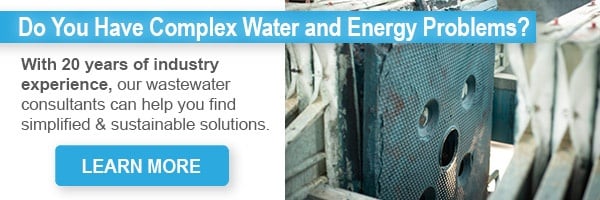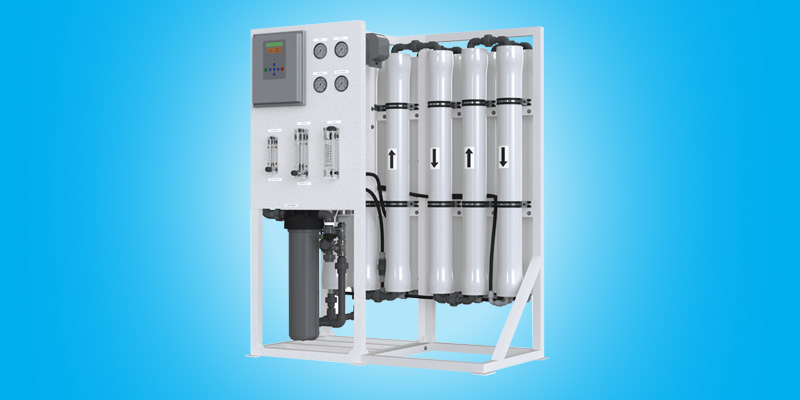High-purity steam is the formula for producing premium quality at high speed for many industries. One such case is the corrugated box production process.
Boiler feedwater quality impacts the purity of the steam. If your job is keeping production on track, you know all too well steam purity in turn affects the corrugator’s speed and efficiency.
All that to say, the boiler pretreatment equipment you enlist to do the job is essential to improving boiler steam quality and avoiding scaling or foaming. These issues reduce boiler operational efficiency and cause tubes to fail.
Popular pretreatment equipment for steam boilers includes:
- Water softeners
- Filters
- Dealkalizers
- Demineralizers
What you don’t see on that list? Reverse osmosis (RO) units. An emerging, groundbreaking application, reverse osmosis for boiler feedwater can eliminate 95-98% of your problems in one process.
Improving Steam Quality: Reverse Osmosis for Boiler Feedwater
Sources of boiler feedwater include returning condensate and makeup water. “Makeup water” simply means the H2O added to plant processes to compensate for lost water.
Your boiler’s makeup water quality is critical because it can impact the whole system.
One way of improving feedwater quality and avoiding fouling, scaling, and corrosion is through reverse osmosis (RO).
What is reverse osmosis, other than a confusing-sounding science term? RO uses a partially permeable membrane to eliminate unwanted ions, molecules, and larger particles from water.
By removing up to 98% of the impurities and dissolved solids, you can reduce the conductivity of the boiler makeup water from 700 uS to 14–35 uS. This would in turn allow you to reduce the blowdown rate from 20% of makeup water to 1%, conserving water and energy. Removing these impurities also improves the quality of the steam.
The End Goals of Industrial Reverse Osmosis Units
Now you understand the main goal of removing total dissolved solids (TDS) in makeup water. That’s not the only way reverse osmosis improves a corrugator’s boiler operation:
- Higher cycles of concentration results in reduced fuel costs
- Improved steam purity and quality for increased corrugator speed
- More efficient operations and increased throughput results in higher revenue/profit
- Reduced risk of carryover in the steam, along with deposits in the boiler and downstream equipment
- Improved condensate corrosion control (no alkalinity in the boiler to produce CO2 for carbonic acid formation)
- Maintains optimal thermal performance, resulting in improved heat transfer in steam boilers
In some cases, improved steam quality has led to a 15% increase in lineal feet per minute in a corrugated box operation. Plants that adopt RO typically see the system pay for itself within 18 months through water and energy savings alone. Increased output speed significantly reduces the time of the return on investment.
How Does Reverse Osmosis Work in Industrial Boilers?
You already know a low blowdown rate can reduce energy losses, since the blowdown liquid’s temperature is the same as that of the generated steam. Minimizing blowdown will also reduce makeup water and steam boiler chemical treatment costs.
As water evaporates in the boiler steam drum, solids in the feedwater stay behind. The suspended solids form sludge or sediment in the boiler, which inhibits heat transfer. Dissolved solids may promote foaming and carryover of boiler water into the steam.
To reduce the level of suspended and total dissolved solids (TDS) to acceptable limits, the steam boiler’s blowdown procedure kicks in. The boiler periodically discharges or “blows down” water.
Insufficient blowdown may lead to carryover of boiler water into the steam, creating wet steam and/or deposit formations on equipment. Excessive blowdown wastes energy, water, and chemicals. The optimum blowdown rate formula is determined by:
- Boiler type
- Operating pressure
- Water treatment
- Makeup water quality
“Cycles of concentration” refers to the productive accumulation of impurities or dissolved solids in a boiler. If the boiler water contains 10x the level of dissolved solids in the makeup water, it has 10 cycles of concentration. If the makeup water level is high in your dissolved solids, fewer cycles of concentration are possible, and fuel is wasted.
If the maximum set point for conductivity (a measurement of dissolved solids) is 3,500 uS and the incoming makeup water conductivity is 700 uS, you can only concentrate the water five times before blowdown becomes necessary. This results in 20% of the heated boiler water quite literally going down the drain. If you can reduce the makeup water’s dissolved solids to 35 uS, you can concentrate the water 100 times and only blow down 1% of the heated water.
Fuel makes up 70-80% of the operational costs in a corrugated boiler system, while water/sewer needs consume only 3-5%. The savings achieved by increasing concentration cycles can be substantial, depending on:
- Steam produced per hour
- Water costs
- Fuel costs
- Chemical costs
Signs It’s Worth Investing in Reverse Osmosis for Boiler Feedwater
It may be time to reassess your toolbox of water treatment essentials for boiler plant operation. RO may be the solution to corrugated packaging production that’s efficient and uninterrupted -- especially if your plant struggles with:
- The quality of the incoming makeup water
- Low concentration rates (3–10 cycles)
- Carryover or wet steam
- Deposits in the boiler
- Maximizing steam production to optimize corrugator speed
- Zero-discharge requirements




